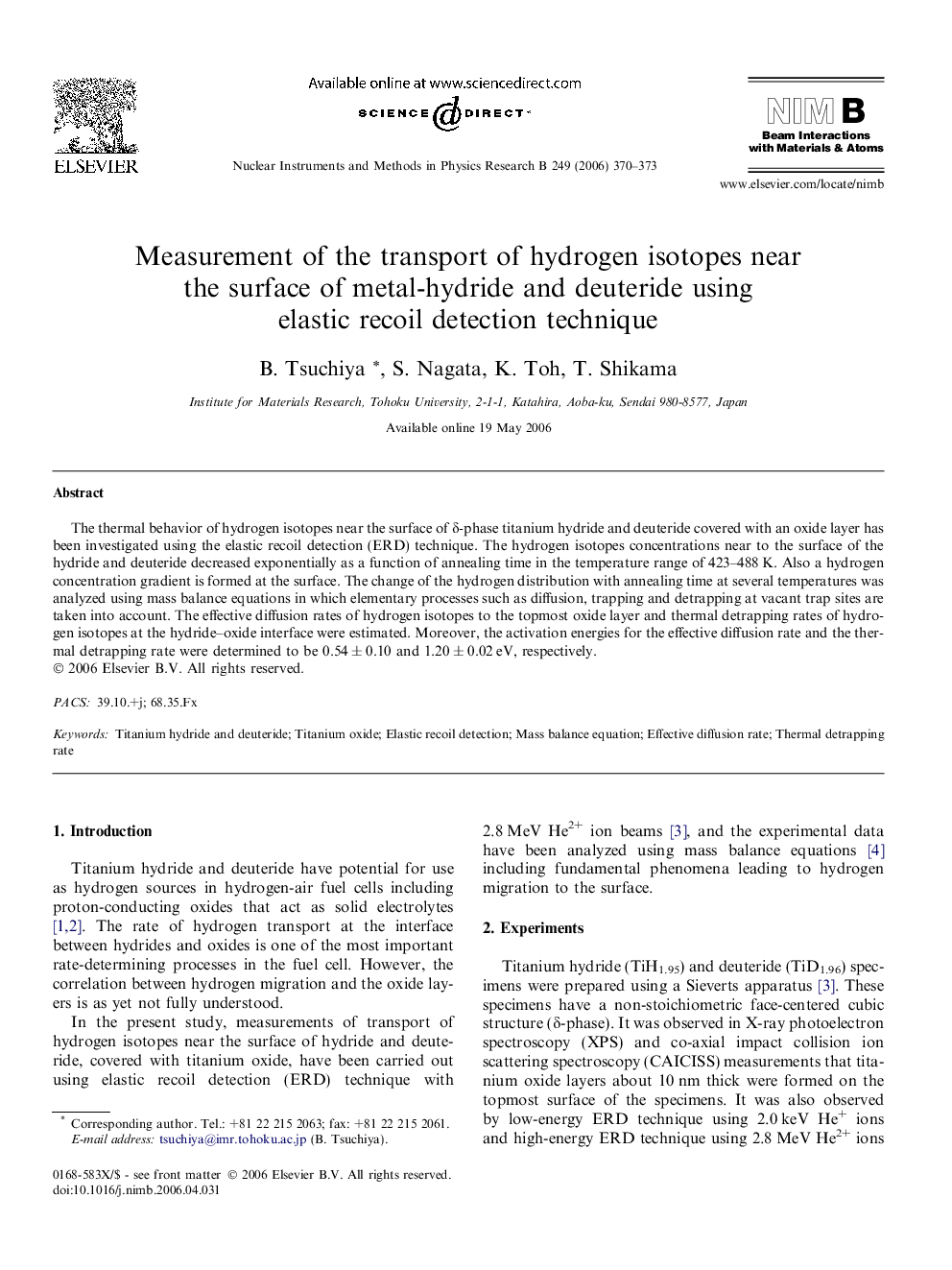| Article ID | Journal | Published Year | Pages | File Type |
|---|---|---|---|---|
| 1686521 | Nuclear Instruments and Methods in Physics Research Section B: Beam Interactions with Materials and Atoms | 2006 | 4 Pages |
Abstract
The thermal behavior of hydrogen isotopes near the surface of δ-phase titanium hydride and deuteride covered with an oxide layer has been investigated using the elastic recoil detection (ERD) technique. The hydrogen isotopes concentrations near to the surface of the hydride and deuteride decreased exponentially as a function of annealing time in the temperature range of 423-488 K. Also a hydrogen concentration gradient is formed at the surface. The change of the hydrogen distribution with annealing time at several temperatures was analyzed using mass balance equations in which elementary processes such as diffusion, trapping and detrapping at vacant trap sites are taken into account. The effective diffusion rates of hydrogen isotopes to the topmost oxide layer and thermal detrapping rates of hydrogen isotopes at the hydride-oxide interface were estimated. Moreover, the activation energies for the effective diffusion rate and the thermal detrapping rate were determined to be 0.54 ± 0.10 and 1.20 ± 0.02 eV, respectively.
Related Topics
Physical Sciences and Engineering
Materials Science
Surfaces, Coatings and Films
Authors
B. Tsuchiya, S. Nagata, K. Toh, T. Shikama,
